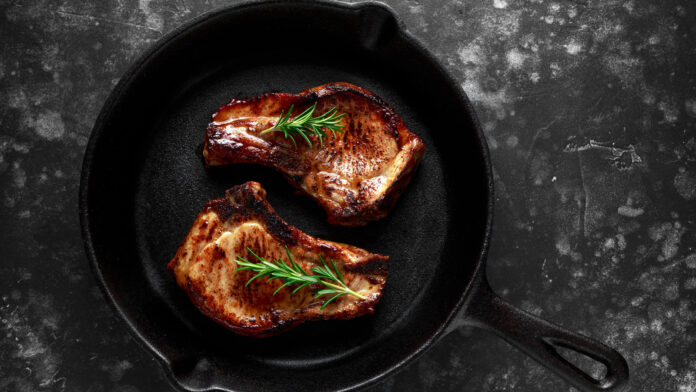
Grilling and pan-frying are two popular cooking techniques universally embraced by home cooks and professional chefs alike. Grilling, generally done over an open flame or on a stovetop grill pan, imparts a distinctive smoky flavor and enticing grill marks.
Pan-frying, on the other hand, is a stove-top method, often using less heat than grilling and introducing different flavors and textures thanks to the cooking oils and fats typically used in the pan. The culinary techniques differ in terms of the depth of flavor and the unique textures they introduce to the finished dishes.
The role of seasoning in both grilling and pan-frying cannot be over-emphasized. Seasoning is the magic wand of the culinary world – it can transform a bland piece into a burst of flavor, a testament to the cook’s prowess. Understanding the importance and proper application of seasoning in both grilling and pan-frying can significantly uplift a meal’s taste and appeal. Precise timing, amounts, and types of seasoning used differ dramatically between grilling and pan-frying, and knowing these distinctions can make or break a meal.
The Basics of Grilling and Pan-Frying
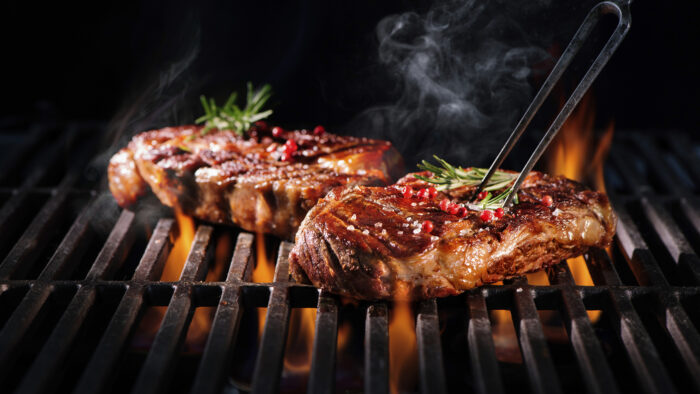
Grilling
Grilling is a cooking method that has been in practice since primitive times. It involves the use of direct, high-heat flames to cook food, giving it a distinct charred and smoky flavor that enhances the seasoning of your choosing. The popularity of grilling can be credited to the intense and unique taste it imparts to food, particularly meats. Various types of grilling techniques exist, including charcoal grilling, which introduces a deep, smoky flavor and is known for its slow, even cooking, and gas grilling, a quicker, cleaner, and more controllable form of grilling.
Pan-Frying
View this post on Instagram
Pan-frying is a versatile cooking method with origins dating back centuries. It involves cooking food in oil or fat at relatively low heat compared to grilling. The popularity of pan-frying lies in its convenience and the rich, caramelized texture it can achieve. There are two types of pan-frying: shallow and deep. Shallow frying cooks the food partially submerged in hot oil, while deep frying entirely submerges the food.
How Cooking Methods Influence Taste
The role of these different cooking methods significantly influences both the taste and texture of food. Grilling generally provides a crispier exterior and smoky flavor while pan-frying offers a golden-brown color with a more tender and juicier interior. The right seasoning technique enhances these inherent qualities of each method, taking the flavors to another level. Proper seasoning can make a grilled chicken smokier and caramelized pan-fried potatoes even more savory and delicious.
Seasoning Techniques for Grilling
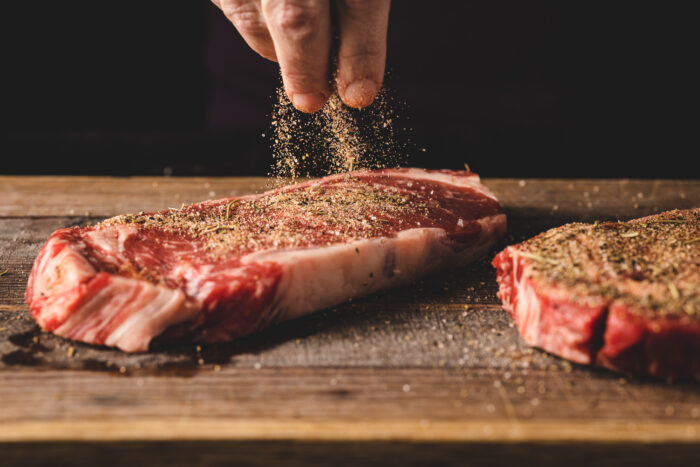
In grilling, seasoning enhances the intrinsic flavor of the food and infuses it with additional taste dimensions. Perfectly seasoned grilled dishes not only engage the taste buds with their palatable flavors but also tantalize the olfactory senses with their irresistible aromas. The seasoning, thus, plays a dual role in upgrading both the taste and the smell of the grilled food.
The types of seasoning used and the timing of their application vary widely in grilling. Some cooks prefer simple seasonings like salt and pepper, while others may use a complex mix of dried spices or homemade rubs. Marinating, which involves soaking the food in a seasoned liquid for several hours, is another prevalent method of seasoning in grilling.
Ethnic cuisines have unique takes on grilling seasoning. For example, in Mexican cuisine, a mixture of lime, chili, and cilantro often seasons grilled meats. On the other hand, Mediterranean cuisine widely uses olive oil, lemon juice, and herbs like oregano and rosemary.
Regardless of the type of seasoning used, the timing is decisive of the outcome of your meal.
In general, for grilling, it’s best to season the food at least an hour in advance to allow the flavors to penetrate. However, for more delicate foods like fish, seasoning just before grilling is more appropriate to prevent the food from getting too salty or drying out.
Seasoning Techniques for Pan-Frying
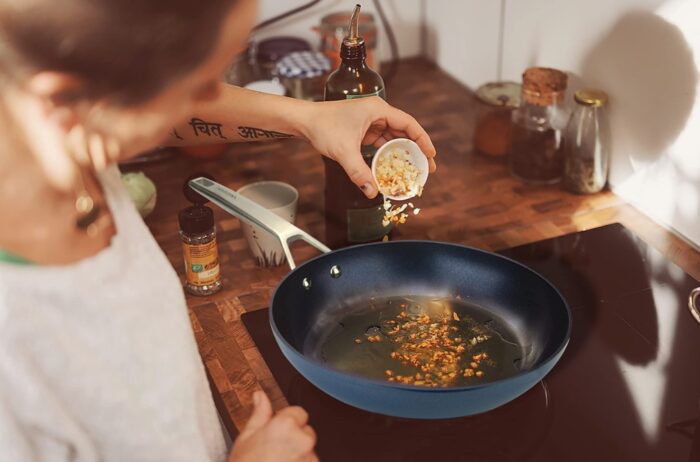
The role of seasoning in pan-frying is integral to coaxing out the distinct flavors of the food. Seasoning in pan-frying not only elevates taste but also creates a delightful crust on the food’s exterior. This crust adds a much-desired texture and visual appeal to the pan-fried dishes. The seasoned and caramelized pan drippings that render during cooking can further enhance flavors if used as a base for a sauce or a gravy.
Salt, pepper, dried herbs, spices, and blends like Cajun or Italian are commonly used types of seasoning. Additionally, ingredients like garlic, onions, or ginger are often used at the start of cooking to season the oil.
Similar to grilling, pan-frying also sees varied seasoning techniques across cuisines.
For example, Asian cuisine involves pan-frying with an exciting mix of soy sauce, sesame oil, and spices like star anise.
In contrast, Italian cuisine uses olive oil, garlic, and Mediterranean herbs to season and accentuate the flavor of pan-fried dishes. The timing of seasoning during pan-frying can be tricky. While some seasonings can be added at the beginning, others that can burn quickly, like garlic or certain herbs, should be added later in the cooking process.
Knowing when and how much to season is essential in pan-frying and can be a deciding factor in the dish’s success. A sprinkle of finishing salt or a splash of acid like lemon juice or vinegar can brighten the flavors immediately before serving a pan-fried dish.
Final Recommendations
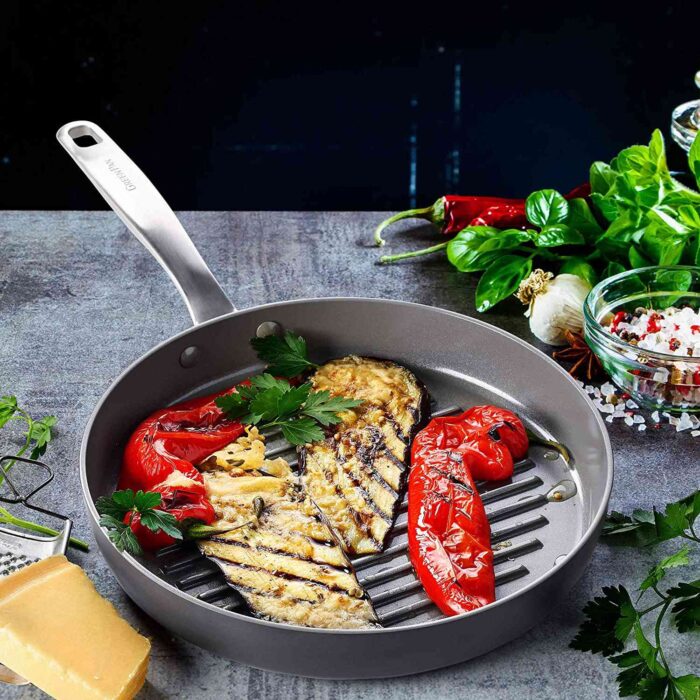
For newcomers to the culinary world, understanding these techniques can be a game-changer in the kitchen. Start with simple seasonings like salt and pepper to understand their baseline effect, then gradually add herbs or spices to observe their impact on taste.
Don’t be intimidated by the variety of seasonings available. Instead, take it as an opportunity to explore different flavor profiles and experiment to find what suits your palate. Lastly, don’t be afraid to experiment. Creating personal blends not only gives you control over what goes into your food but also opens a door to a whole new world of flavors.
Mastering the seasoning in both grilling and pan-frying can significantly upgrade your culinary skills. Understanding the importance of timing, quantity, and the differing impacts of spices, herbs, and marination in these cooking methods will allow you to create meals that are flavorful, delicious, and health-conducive.
Armed with your cooking tools and a dash of daring spirit to experiment with your own seasoning blends, you are well on your way to becoming a true maestro in the kitchen.








